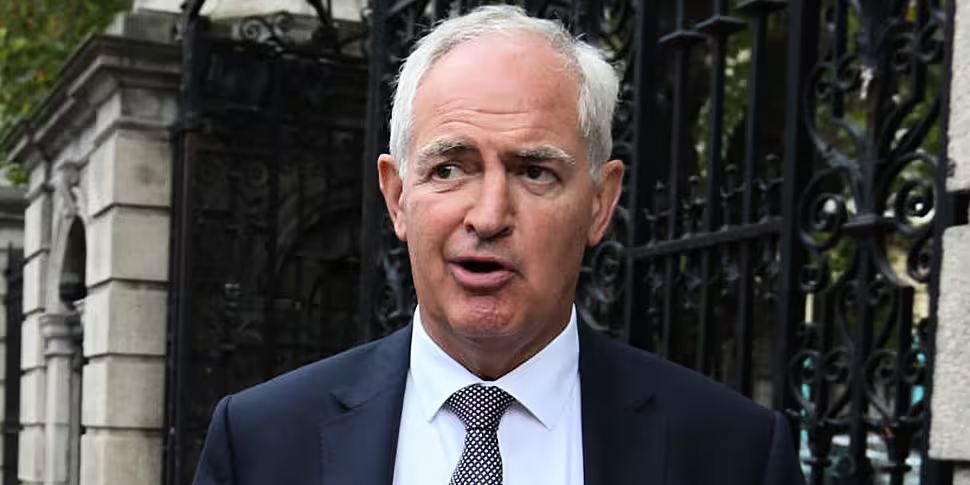If men suffered from endometriosis, it would be taken more seriously as a health condition, Dr Peter Boylan has said.
According to the HSE, endometriosis is a condition where tissue similar to the lining of the womb starts to grow in other places like the ovaries, the lining of the tummy and fallopian tubes.
The health service says endometriosis can affect women of any age, although it is less likely in women after menopause. It is also less likely in girls in the early years after their first period.
Lunchtime Live has been highlighting the issue in recent months, and this afternoon Andrea was joined by an expert panel to discuss the current situation with treatment in Ireland.
Former Master of the National Maternity Hospital, Dr Peter Boylan, told the show how the condition can manifest itself.
"It can be on the pelvis, on the ovaries; it can spread throughout the body, but it’s usually within the abdominal cavity" he said.
"The lining of the end of the uterus normally proliferates during the menstrual cycle and then it sheds, and that's what a period is.
"When it's located outside the uterus it sets up an inflammatory response which cause pain.
"It can also cause scarring and adhesions, and it's associated with extremely painful periods.
"If it's gets into the actual body of the uterus, it's called adenomyosis, and that can cause very heavy and very painful periods and be very debilitating."
 Lunchtime Live convened a panel to discuss the condition of endometriosis. Image: Newstalk
Lunchtime Live convened a panel to discuss the condition of endometriosis. Image: NewstalkDr Boylan said the condition can develop form puberty.
"Interestingly enough, some women can have it but not know it, because they've no symptoms,” he said.
"Of course, we only hear about the women who've got bad symptoms."
Dr Boylan said the best way to detect endometriosis is through laparoscopy, "where you put a little telescope, under general anaesthetic, in through the belly button have a look in at the pelvis".
"That's how you definitively diagnose it.
"It can be managed extremely well, and it can be treated to the extent that it's not present anymore, so I suppose that would be defined as a cure.
"There's medical treatment; the new sort of approach to it is to treat women on the basis that they have it if they have the symptoms.
"So, for example, if a young woman has extremely painful periods you treat her on the basis that she may have endometriosis.
"If she then has persistent symptoms despite minor treatment like going on the pill continuously or taking a Mirena coil for example to suppress periods, if she then... wishes to become pregnant, she may well need to have a definitive diagnosis made."
'Ireland has a long way to go'
Alannah Darcy from the Endometriosis Association of Ireland told the show that people are learning to deal with the condition.
"I think we're still learning about it, which is partly why there's a bit of barrier there," she said.
"Fundamentally, I think, in Ireland, there is a long way to go in terms of the facilities available to patients.
"There's a lot more [that] needs to be done in terms of education and research etc.
"I think we need to start with education and awareness at [a] young age so that they're aware of their symptoms.
"They can present to a GP... armed with enough information to apparent themselves to get the diagnosis they need."
'You can't see somebody's pain'
Ms Darcy said waiting lists are a big part of the problem.
"The only way to diagnose Endometriosis is via laparoscopy; there's no marker, there's no blood test that can be done to diagnose it.
"You can't see somebody's pain, so it can mean that people are left unheard and not really listened to because there's no way to see somebody's pain.
"It is an invasive procedure to diagnose it properly, and this causes awful issues because the availability of people who are able to do laparoscopies or precision surgery is very limited."
'Women get shoved down the list'
Dr Boylan said he believes the condition would be taken more seriously if men suffered from it.
"A GP will see somebody and maybe refer them to a public clinic, but it could be a year or two or more before she gets seen in the clinic," she said.
"Then she has to go on a waiting list for a laparoscopy.
"One of the difficulties in the Irish health service over the years is that the first service to get curtailed when there's restrictions is the genecology service.
"Women just get shoved down the list, because it's not regarded as a serious illness.
"It's not like cancer, it's not like a broken bone.
"I'm a man, but I think if men had it, it would be right up the list," he added.
Listen back here:
Lunchtime Live is hosting an endometriosis event at Drury Buildings in Dublin city on Wednesday October 25th at 6.30pm. People can register by emailing lunchtimelive@newstalk.com









